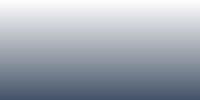

Theo’s sculptural practice interrogates craft and making processes, intuitively inventing ways to release an expressive narrative. He explores and asks important questions of traditional and contemporary materials, processes and landscapes, seeking understanding of the varied environments we live within. The work highlights the meeting of internal being with external place and puts making at the centre of this encounter.
Theo studied Fine Art at Newcastle University and Sculpture the Royal College of Art, London. He is now an AHRC funded PHD Student at the National Glass Centre in Sunderland. He lives and works in Northumberland.
ABSTRACT
My work in clay building began from a need to find an origin in making. Through thinking through material, it then evolved into a meditative coiling process that existed as a way to think through ideas relating to my wider sculptural practice. The coiling process has transformed into a hybridisation of learnt printing patterns taken from 3D printing and an organic-figurative understanding of expressive form and craft learnt over about 8 years.
I intend to maintain the connection to hand coiling so that the conversation between body and 3D printing is kept central to the research, as they are both in different ways intimate, performative and laborious processes.
In the case of many automated processes the body’s function and connection to material has been removed, in this case the ceramic 3d printer. You are able to observe the connection to emergence, process philosophy and ecology from the outside where prototyping in 3D printing has become almost like watching ‘evolution in action’ (Harper et al 1977). It is this gap and change in perspective that will be a central subject in the research.
The artefacts being produced are evolving as I experiment more with scale, complicated form, and how the making process relates to the computational and robotic areas of ceramic 3D printing. The work is concerned with how the automation and universality of mark making within 3D printing is standardising the objects it creates by following the rules set out by the machine’s author and different slicing programs. Everything therefore is measurable and quantifiable.
These rules for a creative practitioner limit the scope for felt expression but also create a boundary for which to argue against. It is this thought process that sets out a frame work for a more expressive, hybrid form of making, that directly questions traditional ideas of embodiment.